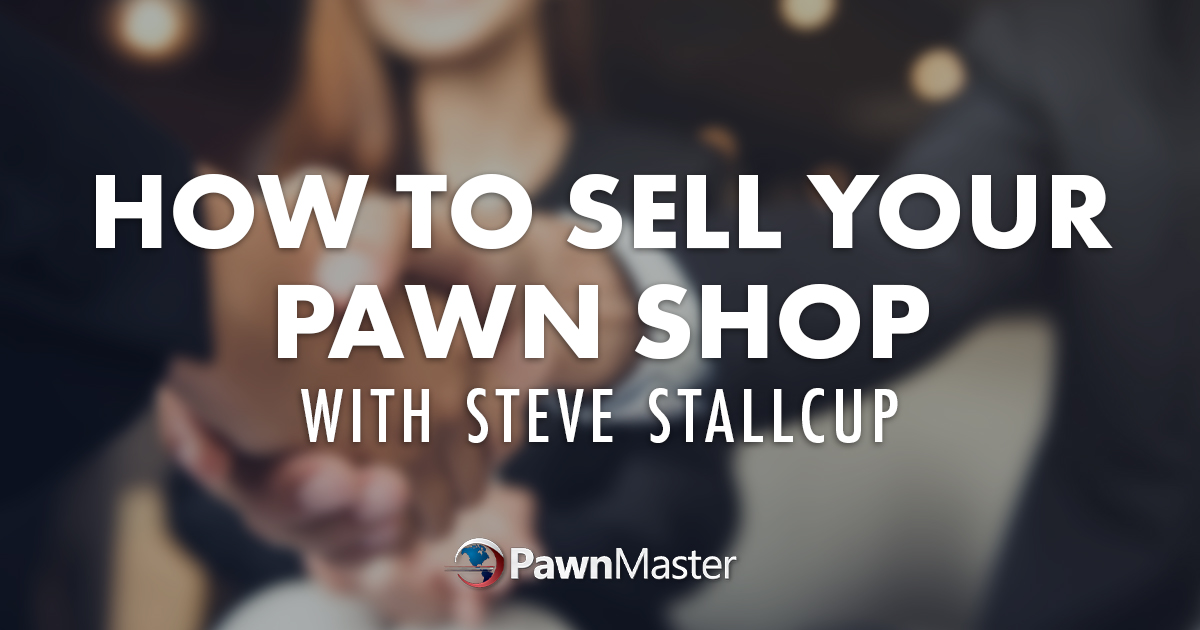
Pawn business sellers typically engage in one of two scenarios. In one scenario, the seller calls a potential buyer and asks the buyer to put a value on their business (usually as a result of receiving a buyer’s generic flyer in the mail). In the other scenario, the seller responds to a call from a salesperson whose number one goal is to get the seller to put a value on their pawn shop before the seller knows its true value.
Both scenarios are problematic because they result in the seller making the same costly mistakes: not marketing their business to all potential buyers at the same time and agreeing on a too-low purchase price. If you’d like to sell your pawn shop, but you’re not sure where to start, you’ve come to the right place.
WHY DO PAWN SHOP OWNERS MAKE THESE MISTAKES?
For one thing, most pawn business professionals simply don’t have easy access to the data they need to come up with a proper valuation. For another, it’s very time-consuming for any business owner to come up with a marketing plan and proper business valuation when day-to-day operations have to take precedence over valuation homework.
Valuation homework includes developing the following six items:
1. FINANCIAL PRO FORMA
Your financial pro forma is a financial statement based on your business’s hard financial data, the facts of your operation, and forecasts based on what your business is currently doing and the buyer’s earning potential. To develop a pro forma that you can present to potential buyers, you need to compile historical data on your business as well as comparative data on similar shops and the buyers of similar shops.
Your pro forma should answer these key questions:
a) How efficiently have I been operating my business when I compare it to other pawn shops in my market and across my state?
b) What are my financial metrics?
-
- How do I compare with similar shops in terms of yield on loans and yield on inventory, turn ratio, and gross profit margin?
- What are my default and renewal rates?
- What is my loan balance size and product stratification?
- What is my normalized operating expense to net revenue ratio?
2. LEASE ANALYSIS
Always negotiate your lease or leases. Many sellers make the mistake of agreeing to the lease the buyer brings them without requesting modifications that would better serve them.
3. DEMOGRAPHIC STUDIES
Create a demographic analysis of competitors that have customer densities and profiles similar to your own. This analysis should reveal how you’re performing relative to your competitors, as well as help you determine market share availability; that is, the saturation of pawn providers in your area and the quality of those providers. Keep in mind that if your business is underperforming and overpriced, strategic buyers may opt to compete with you by placing a de novo store near you rather than buy you out.
4. NON-COMPETE AGREEMENTS
You should always negotiate non-competition terms. You may think that you don’t need to care too much about the non-compete agreement your buyer presents, but negotiating non-competition terms is important, even if you never intend to open another pawn shop.
Why? It’s a point of leverage. You may be able to point to the non-competition terms and get something else that you want, such as a concession on a lease agreement or some other benefit that ultimately adds to your purchase price. Whatever you do, do not tell the buyer that you will never want back into the pawn business.
5. ASKING PRICE
Buyers commonly try to use multiples of loan balances, inventory, EBITDA, and revenue to establish an offer, but not all stores are equal—nor are all state regulations. Don’t get stuck playing the multiples game. If you do, you will most certainly leave money on the table. Instead, use benchmarks based on thousands of comparable pawn shop transactions to develop hard financial metrics to help determine your asking price.
If you’re confident in the reasons behind your asking price when you go into negotiations and can point to hard data that backs up your claims, you’ll be able to do less negotiating and more dictating; in other words, you’ll be able to sit back and let the numbers speak for themselves. Another big plus? The sales cycle will move more quickly than it would if you didn’t present an accurate asking price based on factual data.
6. FINAL TRANSACTION DEADLINE
It is incredibly important to determine your transaction deadline before you market your pawn business. You don’t want the sales process to dragon and on, and you want to be able to make plans for your future that aren’t contingent on buyers’ timelines. Contact all qualified, potential buyers at the same time in order to ensure that your timeline sticks.
By performing the same calculations your buyers are performing, in some cases, you could potentially get twice what you originally hoped to gain out of the sale of your pawn business. Just identifying barriers to entry in your area or municipality alone can help you raise your asking price appropriately by significant margins.
The key to getting the most out of the sale of your pawn business is knowing what your buyer’s revenue potential would be once the buyer takes over your business. Armed with all of this knowledge and preparation, you’ll get what you deserve out of the sale of the business you have worked so hard to build.

Stallcup Group is an industry leader in exit strategy consulting. Steve Stallcup, CEO and Founder of Stallcup Group, authored this blog in partnership with PawnMaster. If you’re looking to sell your pawn shop and don’t want to leave money on the table, you can reach out to Stallcup Group by filling out this form at PawnMasterNation.com.

